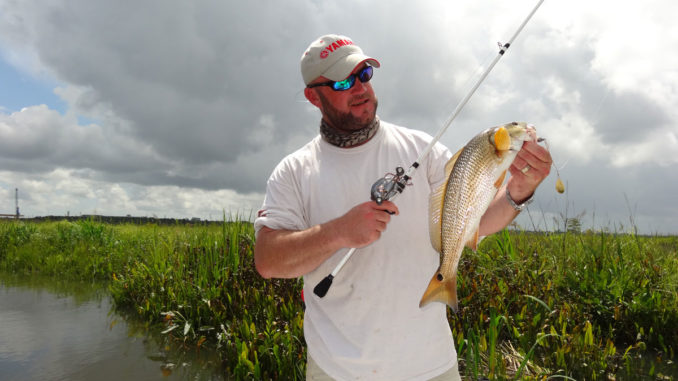
Change blade sizes, shapes, colors to match situations, changes in tides.
If you want to make a real splash with your redfishing, this summer, opt for a spinnerbait, which is a prime-time lure for August fish.
There’s no place better to tie on a spinning lure of some size, blade and color combination than the area around Bulls Bay, which is often redfish central for in-the-know anglers.
One fishermen who loves the Bulls Bay area is guide and tournament pro Rob Beglin of Pawley’s Island, who said spinnerbaits are not actually productive, but fairly easy to fish.
“The key to using spinnerbaits is to keep casting, working and changing locations until you find an area loaded with redfish,” Beglin said. “The spinnerbait is actually a simple lure to use, and when you get a bite, the reds usually load on, so there’s no mystery in regard as to when to set the hook.
“I use them a tremendous amount of the time during much of the year, but the hot summer months, including August, are prime time for me to use the blade bait.”
Beglin, who operates Inshore Xtreme Guide Service, uses a spinnerbait for redfish so much that he makes his own blades he uses when tournament fishing or guiding.
“I’m a redfish addict, I admit,” he said. “So I do whatever I need to do to catch more fish. My favorite commercial lure is the Redfish Magic spinnerbait, and it does work very well. The key to success of any spinnerbait, however, is where and how you fish it — and that will change dramatically as the tide raises and falls.”
Another angler who loves spinnerbaits for redfish in August is guide Clayton Crawford, who uses live bait when needed by said spinnerbaits produce lots of quality redfish.
“It’s not what everyone does, but using spinnerbaits for redfish is something that anyone who can cast accurate can do and be effective,” Crawford said. “The primary lure I’m using is a Redfish Magic with a 3-inch Gulp! ripple mullet trailer. My favorite color pattern with a white and chartreuse, but other colors will work well too.”
Crawford said the key to spinnerbait success is working the bait along grass edges that drop quickly into deeper water.
“It’s essential that the spinnerbait be cast right against the weeds,” he said. “My primary targets are the many small points and pockets along a shoreline where the water drops quickly to deep water. These points and pockets will attract and hold redfish at this time of the year; they’re perfect ambush spots.
“To be consistently successful, the key is to get the lure right into the edge of the grass line. That’s why I like getting the lure back into the pockets and right on the tip of points. Usually the bite will be within the first few cranks of the handle, then the battle is on.”
Crawford searches for baitfish to key in on good places to fish. He will also look and listen for actively feeding fish along the grass line.
“Once I find a productive stretch of water, it’s common to be able to work it repeatedly and continue to catch fish,” he said. “However, if I fish a place for 15 to 20 minutes and don’t get into fish, then I’ll move to another area. If the fish are there and in the biting mode, it won’t take long. If they are there, they’ll roam the edge lines looking for something to eat, periodically stopping and holding in small pockets or on the points waiting to ambush some forage. So working the same stretch two or three times will typically produce several fish. That’s another good thing with spinnerbaits: you can work them quickly and effectively yet cover water thoroughly.”
Crawford said he’s had success from Bulls Bay south to Charleston and its river systems.
“I’ll often start from Buck Hall Landing and go toward Bulls Bay, depending on the weather and wind conditions,” he said. “But I’ve also have very good success in the large rivers around Charleston as well, and (I) have caught big reds so far up the rivers that I’ve actually caught largemouth bass and redfish working the same stretch of water. It is an amazing and productive lure for redfish.”
Crawford will fish blades on oyster rakes, at places where ditches flush into the ICW, as well as the larger creek mouths, and that spinnerbait fishing will be good from now through September in these areas.
The specific areas where redfish are caught are certainly keys, and according to Beglin, the tides have a dramatic influence on exactly where these fish are found during the course of a day.
“As the tides rise and fall ,the cover situation changes dramatically, even in the short time of 30 minutes in many cases, and the location of where the redfish will be change tremendously,” he said. “Many times, I’ve fished a specific area with relatively little success and come back two hours later in the tide and have a totally different fishing situation and have caught a bunch of redfish.
“But the situation was different with the tide higher or lower. The key is catching the water stage at the right level for the reds in a specific area. That will be a function of the tides, the type area it enables you to fish and, of course, the forage available.”
Beglin said that a good time to fish spinnerbaits is on a rising tide as soon as the water reaches the grass, and from there, all the way to high tide.
“I change locations as the tide rises and the higher it gets, I’ll begin to probe further back in the creeks and smaller cuts into the flats to stay with the redfish as they move into the grass and feed,” he said. “They use the small creeks, and ditches are often pathways; that’s where I’ll target them. I can stay on a strong fish-catching pattern right though the rising tide.”
Even though the rising tide is productive, the dropping tide is his favorite time to catch spinnerbait reds in August, Beglin said.
“I love the falling tide at this time of the year,” he said. “The dropping tide means the forage and the redfish are moving out of the grass flats. Often I can get on a good pattern of targeting the small creek mouths and ditches as the water pours out. Also, the oyster shell humps — there are many of them in the Bulls Bay area — are prime targets, The fish will often get behind these areas to ambush forage moving out of the grass, and rolling a spinnerbait across that will often produce a good bite.”
Beglin and Crawford both said that working a spinnerbait along the edges of the grasslines is fairly simple in terms of technique.
“Cast it right at the edge of the grass. usually that will be in two to four feet of water,” Crawford said. “Work it back in a variety of retrieves, from a steady to a stop-and-go, letting it occasionally drop, then pop the rod tip to add some action. The key is to keep varying the retrieve until you find the pattern for the day. And as the tide changes and the conditions change, that may change as well.”
As for big fish, spinnerbaits also rule. Capt. Steve Roff of Barrier Island Guide Service in Georgetown fishes the Bulls Bay area as well, and he said he fishes the mouths of the large inlets to target big redfish on spinnerbaits at this time of the year.
“Tides are the key, but at many of the inlets, there are times when the tide level is such that bars adjacent to deep channels are at fishable depths,” Roff said. “This is a key time to find some really big redfish using a spinnerbait. Cast it out in the deeper water and work it back along the drops. The action is not always slow, either, even when targeting big reds; sometimes you find several in a tight area. Big redfish on spinnerbaits are common. Spinnerbaits are just an all-around great redfish bait, especially at this time of the year when the forage is so abundant. Keep moving, looking and fishing and you’ll can catch plenty of redfish and some huge fish as well.”
DESTINATION INFORMATION
HOW TO GET THERE/WHEN TO GO — Bulls Bay and the surrounding vicinity is north of the Charleston/Mt. Pleasant area and south of Georgetown and McClellanville. Landings close to the area are off US 17, the primary road linking these areas. Buck Hall Landing in the Francis Marion National Forest and Garris Landings are two public access areas. Redfish action is great throughout the summer, but August is a prime month for using spinnerbaits for both numbers as well as trophy reds; the action continues into September.
BEST TECHNIQUES — Fish spinnerbaits of various sizes, colors and blade combinations around grass beds. The fishing is good on a rising or falling tide but is best when the water is in the grass.
GUIDES/FISHING INFO — Rob Beglin, Inshore Xtreme Guide Service, 843-458-1920 or www.FishingCharterMyrtleBeach.com. Clayton Crawford, 843-277-4477; Capt. Steve Roff, Barrier Island Guide Service, 843-446-7337 or www.barrierislandguide.com. See also Guides and Charters in Classifieds.
ACCOMMODATIONS — Charleston Area Convention and Visitors Bureau, www.charlestoncvb.com; South Carolina Association of Visitor Bureaus, www.discoversouthcarolina.com.
MAPS — Maps Unique, 910-458-9923 or www.mapsunique.com; Capt. Seagull’s Nautical Charts, 888-473-4855 or www.captainseagullcharts.com; Sealake Fishing Guides, 800-411-0185 or www.thegoodspots.com.

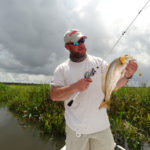
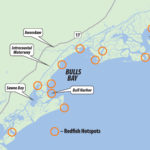
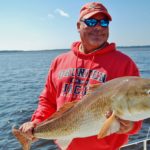
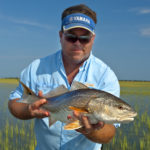
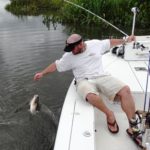




Be the first to comment